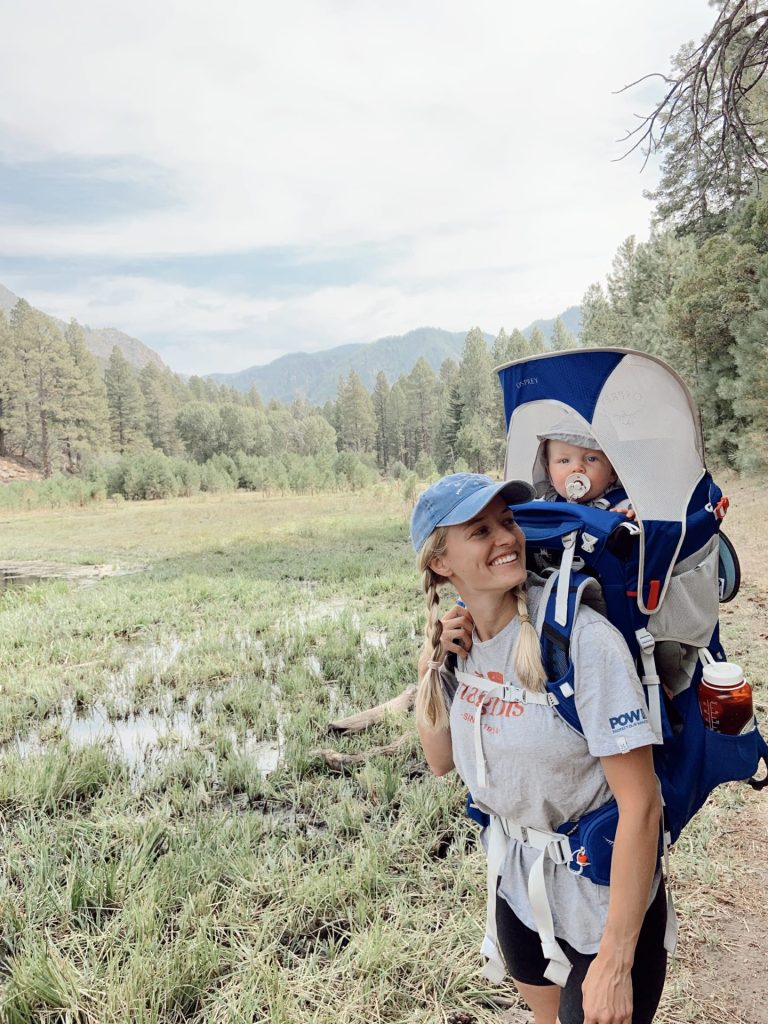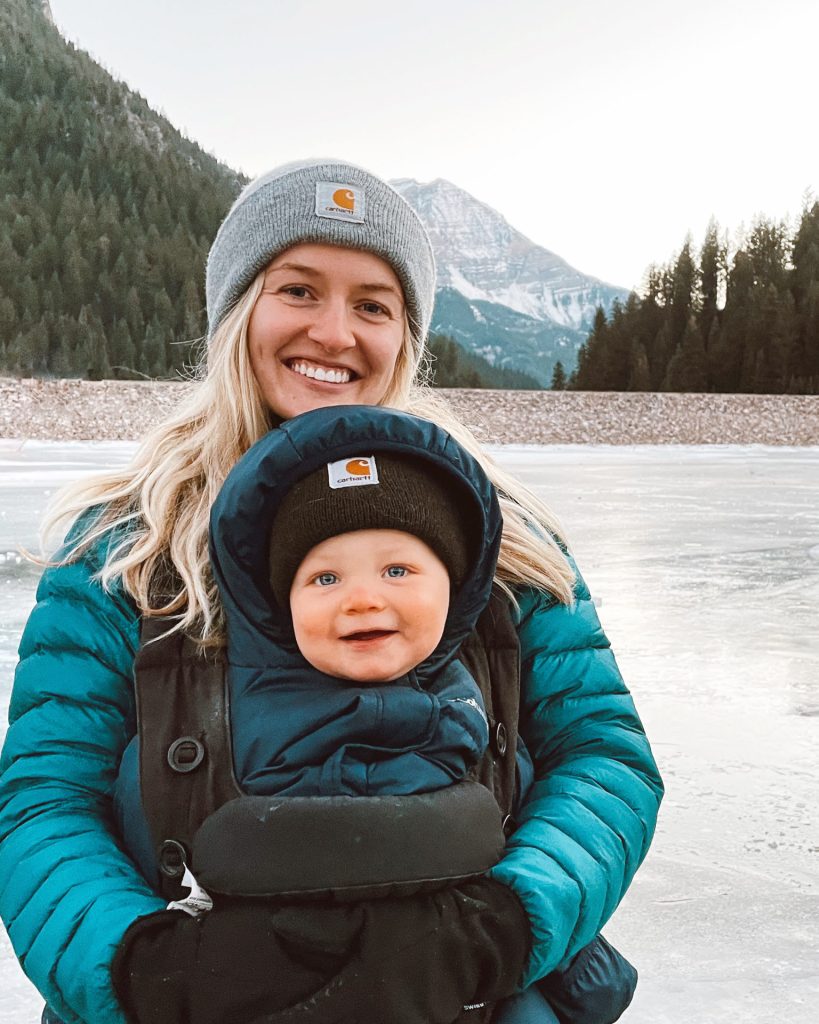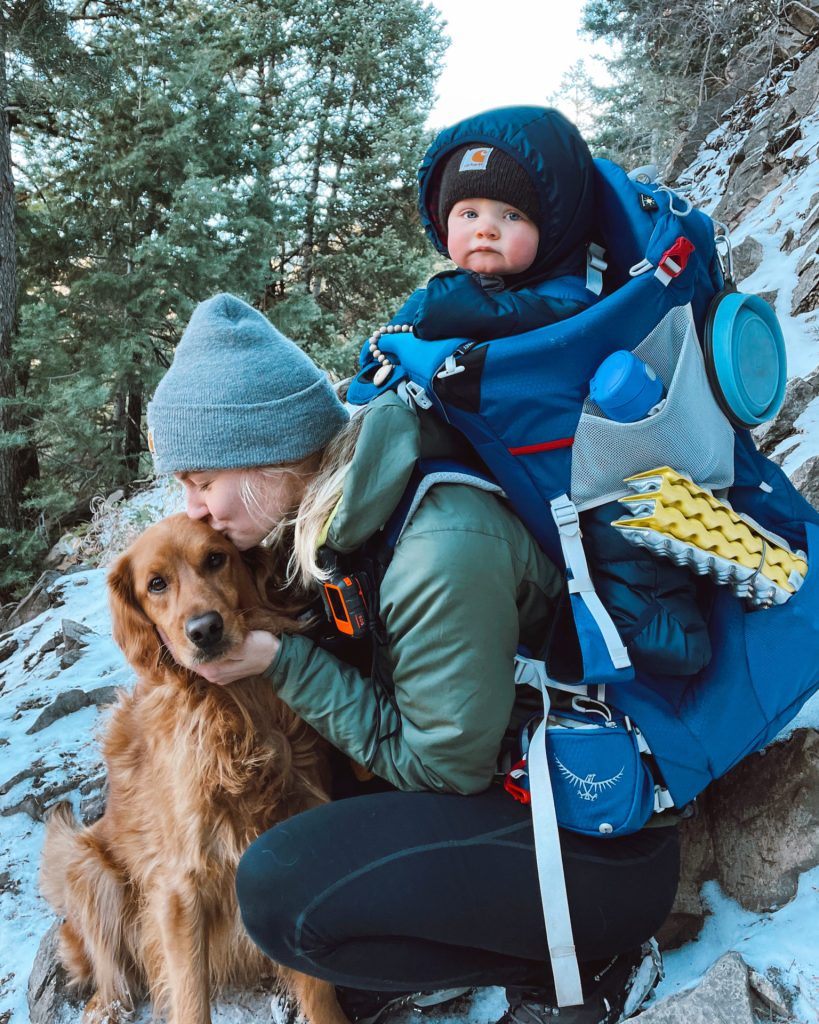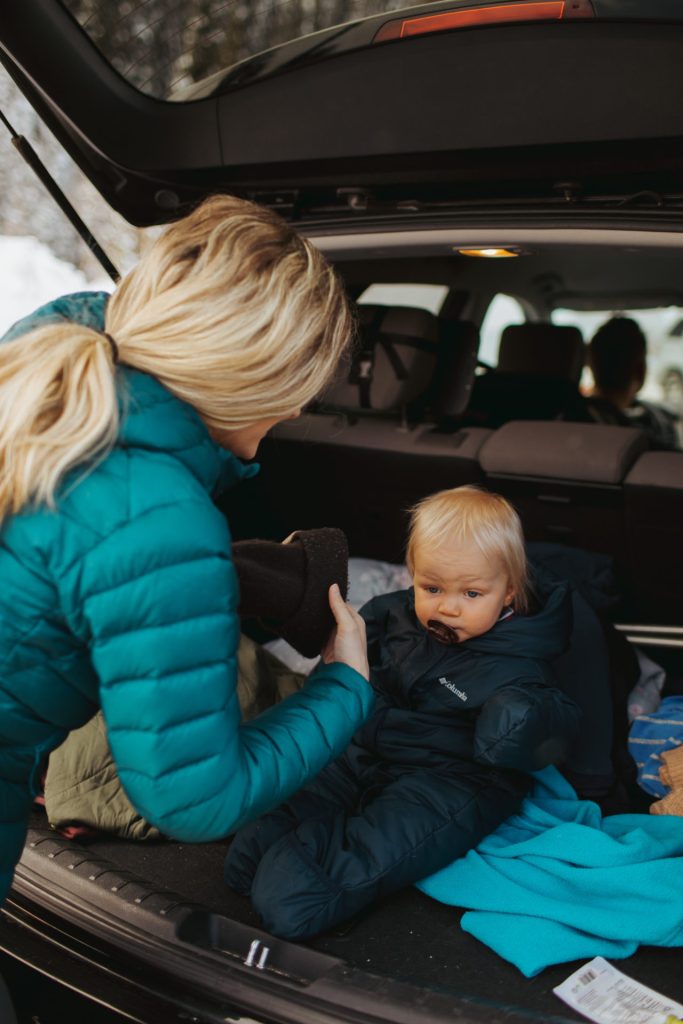In this post I am going to share effective ways for preventing tick and bug bites as well as the gear and products I use that will help keep you and your kids safe from bugs this summer.
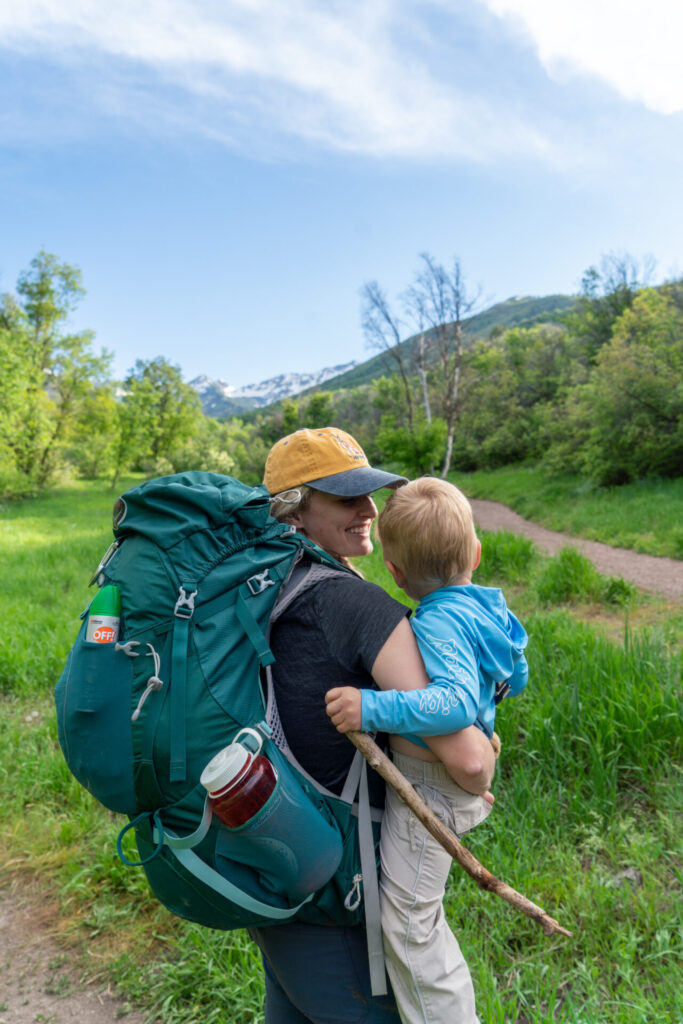
Summer is a great time to hike and enjoy the outdoors, but along with the warm weather comes bugs and ticks. As someone who loves spending time outside with my family, I’ve learned how important it is to protect everyone from getting bit. We’re all happier if we’re not constantly smacking away mosquitos and dealing with the itchy aftermath. I also want to make sure we’re not contracting any diseases these ticks and mosquitos might be carrying.
In this ultimate guide, I’ll share what I’ve found to be the most effective strategies for preventing tick and bug bites. From choosing the right clothing and using top-notch repellents to performing thorough tick checks, these tips will help keep your family safe and comfortable during your outdoor adventures.
*This post is not sponsored. Some of the links shared in this post may be affiliate links meaning I make a small commission off of your purchase (with no extra cost to you). This allows me to continue to create free content for my readers. Thank you for your continued support!
Spray Your Clothes With Permethrin
Spraying my clothes with permethrin is the first step I take in preventing tick and bug bites on the trail. I do it at the beginning of the season, before I even start hiking.
Permethrin is a synthetic chemical that acts as an insecticide, repellent, and acaricide. It is used to treat clothing and gear to protect against ticks, mosquitoes, and other biting insects, making it an excellent choice for hiking in areas where these pests are prevalent. This is not a bug spray you apply to your skin!
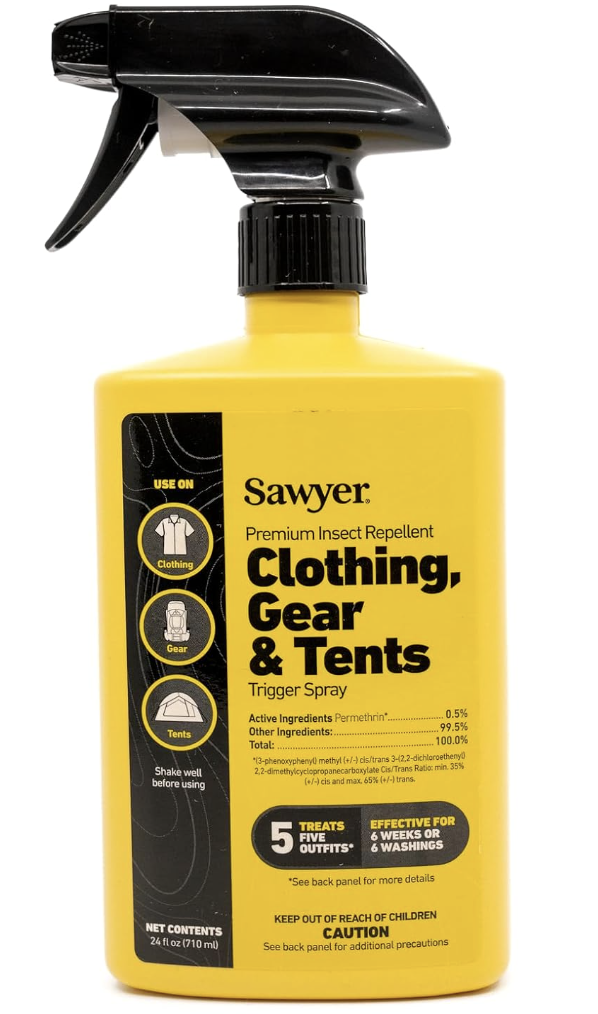
How to Apply Permethrin
- Preparation: Prepare by finding a well-ventilated area, preferably outdoors, and wearing protective gloves and a mask.
- Lay Out Clothes: Hang the clothes on a hanger or drying rack, spreading them out for even application.
- Application: Shake the permethrin spray bottle well and hold it 6-8 inches away from the clothing. Spray in a slow, sweeping motion to cover the entire surface lightly until the fabric is slightly damp. Focus on key areas like cuffs, collars, and waistbands.
- Drying: Allow the treated clothing to hang dry in a well-ventilated area. Be sure to avoid direct sunlight and heat sources and ensure they are completely dry before wearing.
- Reapplication: Reapply permethrin every 6 weeks or after 6 washings, or more frequently with heavy use. Always follow the manufacturer’s instructions, wash hands after application, store the spray safely, and avoid contact with cats.
You can watch this video here where I share how I spray my clothes and gear with permethrin.
Safety Tips
- Read the Label: Always follow the manufacturer’s instructions on the permethrin product label.
- Wash Hands: Wash your hands thoroughly after applying permethrin.
- Storage: Store permethrin spray in a cool, dry place away from direct sunlight. Keep it out of reach of children and pets.
- Avoid Skin Contact: Do not apply permethrin directly to your skin!! It is meant for clothing and gear only.
Is Permethrin Safe?
Permethrin is considered safe for use on clothing and gear for several reasons:
- Low Human Toxicity: Permethrin has low toxicity to humans when used as directed. It acts on the nervous systems of insects, which are very different from those of humans. This makes it effective against pests while posing minimal risk to people.
- Non-Skin Absorbent: When applied to clothing, permethrin binds tightly to the fabric fibers and is not readily absorbed through the skin. This reduces the risk of systemic exposure and makes it safe for wearing treated clothing.
- Degradation in Environment: Permethrin breaks down quickly when exposed to sunlight, air, and soil, which minimizes its environmental impact and reduces the risk of long-term exposure.
- Regulatory Approval: Permethrin has been evaluated and approved by regulatory agencies such as the Environmental Protection Agency (EPA) for use in insect repellents. These evaluations include rigorous safety testing to ensure it meets safety standards.
- Effective Insect Repellent: By effectively repelling and killing insects like ticks and mosquitoes, permethrin reduces the risk of insect-borne diseases.
When used according to the instructions, permethrin-treated clothing provides a safe and effective means of protection against insect bites.
Cover Exposed Skin
Covering up while hiking is a simple but very effective way to preventing bug and tick bites. Wearing long sleeves, pants, and hats keeps mosquitoes and ticks from reaching your skin. This means fewer bites and a lower risk of contracting diseases they might carry. It’s just a smart way to stay comfortable and safe.
Plus, when you pair covered skin with insect repellents like permethrin, you’re pretty much doubling your protection. This combo makes it really tough for bugs and ticks to get to you. It’s all about making your outdoor adventures more pleasant and worry-free.
How To Dress Effectively To Avoid Bug and Tick Bites:
- Wear Long Sleeves and Pants: Choose lightweight, long-sleeved shirts and long pants to cover as much skin as possible. This reduces the areas where bugs and ticks can access your skin.
- Tuck in Clothing: Tuck your pants into your socks or boots and your shirt into your pants. This helps prevent ticks from crawling up under your clothes.
- Choose Light-Colored Clothing: Light-colored clothes make it easier to spot ticks, helping you remove them before they can bite.
- Wear a Hat: A wide-brimmed hat can protect your head, neck, and ears from insects. It also helps prevent ticks from attaching to your hair.
- Wear Closed-Toe Shoes: Opt for sturdy, closed-toe shoes or boots to protect your feet and ankles.
- Avoid Scented Products: Fragrances from lotions, shampoos, and perfumes can attract insects. Use unscented products instead.
I love wearing sun hoodies to protect our skin from the sun and from bugs. Here are a few of my favorites:
Adult Sun Hoodies
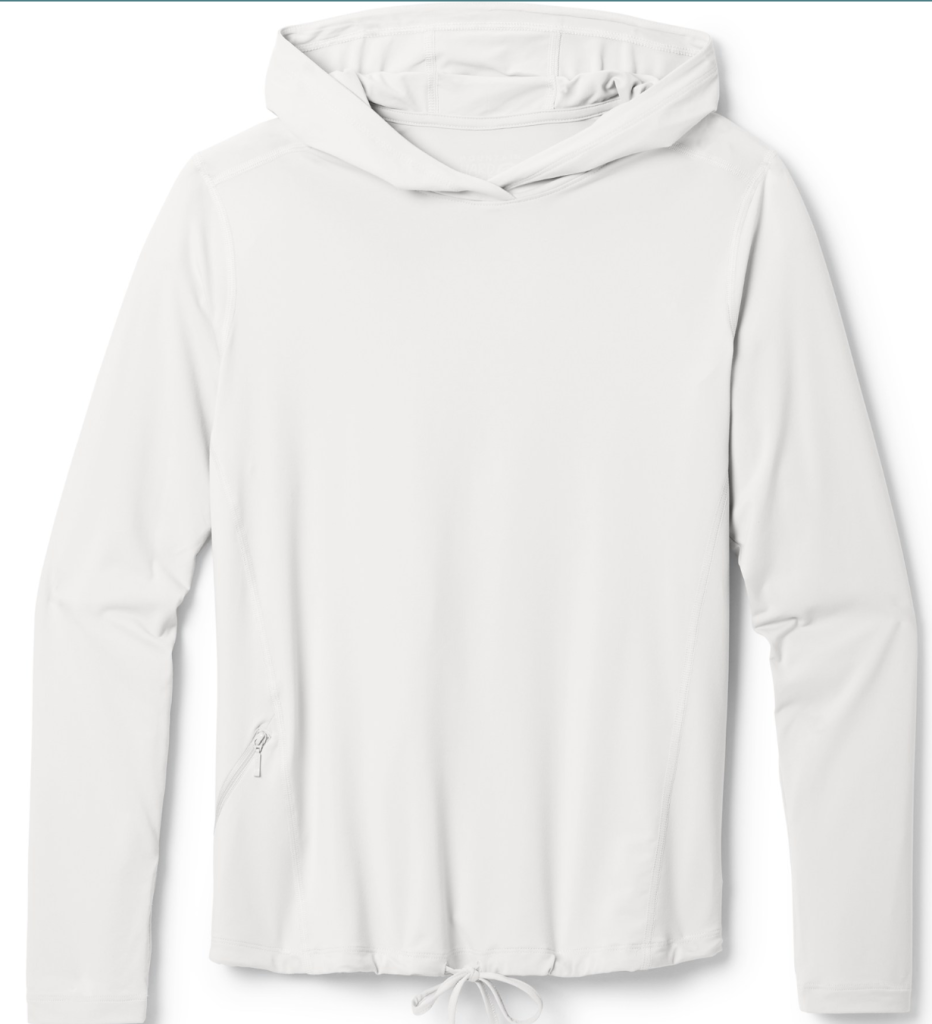
Mountain Hardwear Crater Lake Sun Hoodie: This is one of the lightest weight sun hoodies on the market and is still 50 UPF. This is my #1 recommendation!
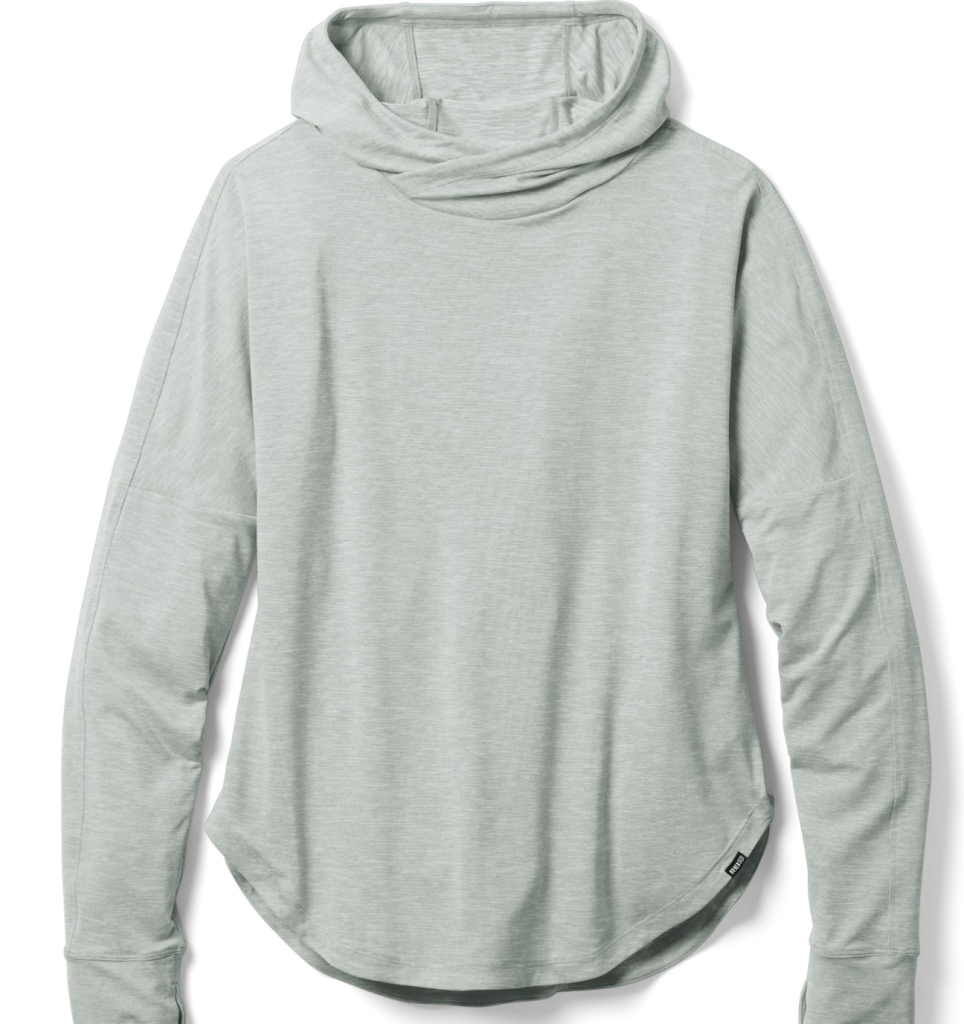
Sahara Shade Hoodie: This is a more budget friendly option that is a little heavier but still a great option!
Kids’ Sun Hoodies:

Patagonia Baby Capilene Silkweight Hoodie: This was the first sun hoodie I got my toddler and he still wears it. It’s the lightest weight sun shirt he has and it’s very soft.
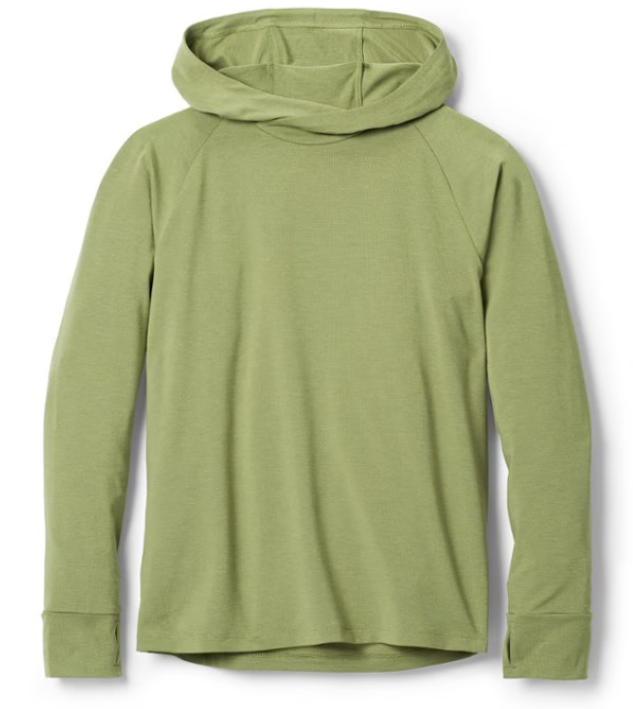
REI Kid’s Sahara Shade Hoodie: This one is slightly heavier than the Patagonia one, but my kids don’t seem to care. And it’s less expensive. Here is the link for the toddler size.
Apply Insect Repellent
You can’t cover completely cover your whole body with clothing, so I like to spray my exposed skin with bug repellent to continually be preventing tick and bug bites. I have used many different types of bug repellent over the years. What I use depends on how buggy the trail is going to be and how long we’ll be out. It’s always best to use what you feel comfortable with and what works for you and your family.
When choosing a bug spray, make sure to not get on a sunscreen bug spray combo. The reason is sunscreen needs to be reapplied more frequently—every two hours and after swimming or sweating. Insect repellent, especially those with DEET, should not be applied more than once a day. This difference in reapplication schedules can lead to overexposure to the repellent or under-protection from the sun.
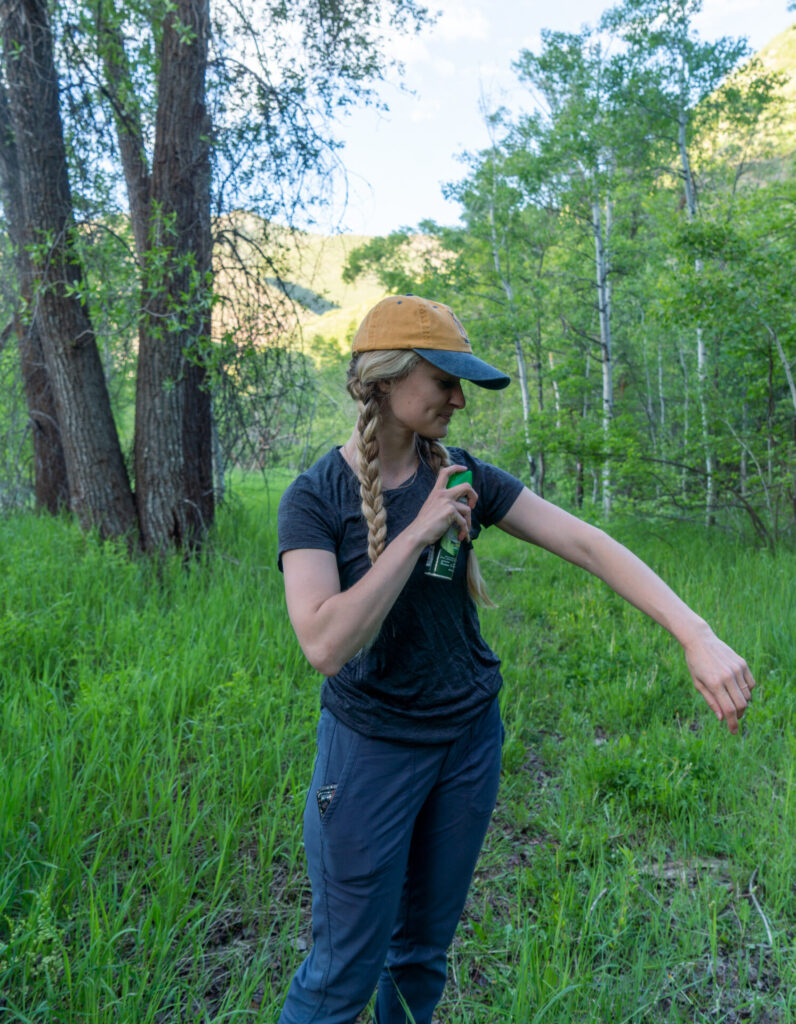
DEET Bug Spray
According to the CDC, insect repellents containing DEET are safe for both adults and children when used as directed. DEET is highly effective in protecting against mosquitoes, ticks, biting flies, chiggers, and fleas. For children, the CDC and the American Academy of Pediatrics recommend waiting until the child is 2 months old. You should also use products with DEET concentrations between 10% and 30%. Products with lower concentrations (10%) are suitable for short outdoor activities, while higher concentrations (up to 30%) offer longer protection, typically around five hours.
It is essential to apply DEET-based repellents properly: avoid application on the face, under clothing, on cuts, or irritated skin, and do not use it on the hands of young children to prevent ingestion. Always follow the label instructions and wash off the repellent after returning indoors. Using DEET-based repellents can significantly reduce the risk of insect-borne diseases, making outdoor activities safer for everyone.
Picaridin Bug Spray
Picaridin bug spray is a safe and effective alternative to DEET for both adults and children. It is an EPA-registered insect repellent that effectively protects against mosquitoes, ticks, and other biting insects. It is less likely to cause skin and eye irritation compared to DEET, making it a suitable choice for sensitive skin.
For children, products containing picaridin can be used safely, with a 5% concentration providing protection for 3 to 4 hours. Use a 20% concentration offering protection for up to 12 hours. Picaridin is recommended by various health organizations, including the Environmental Working Group (EWG) and the American Academy of Pediatrics (AAP), due to its effectiveness and low potential for adverse reactions. It is important to follow the label instructions carefully and avoid applying the repellent on the hands, eyes, mouth, or on broken or irritated skin of young children.
Natural Bug Sprays
Natural bug sprays can be an alternative for those who prefer to avoid synthetic chemicals. These sprays often contain ingredients like oil of lemon eucalyptus (OLE), citronella, and soybean oil. According to the CDC and Environmental Working Group (EWG), OLE is effective and safe for use on children over three years old, offering protection against mosquitoes and other insects for several hours. However, it does not last as long as DEET or picaridin-based repellents and should not be used on children under three years old.
Citronella oil and other natural ingredients like peppermint oil and lemongrass oil are also commonly used in natural repellents. While these can provide some level of protection, their effectiveness is generally shorter-lived compared to DEET or picaridin. The CDC recommends using EPA-registered products (like picaridin, DEET, or oil of lemon eucalyptus) for the best protection, as these have been evaluated for both safety and effectiveness. For parents concerned about the potential risks of synthetic repellents, natural options can be suitable for short-term use but may require more frequent reapplication to maintain their efficacy.
Perform Tick Checks
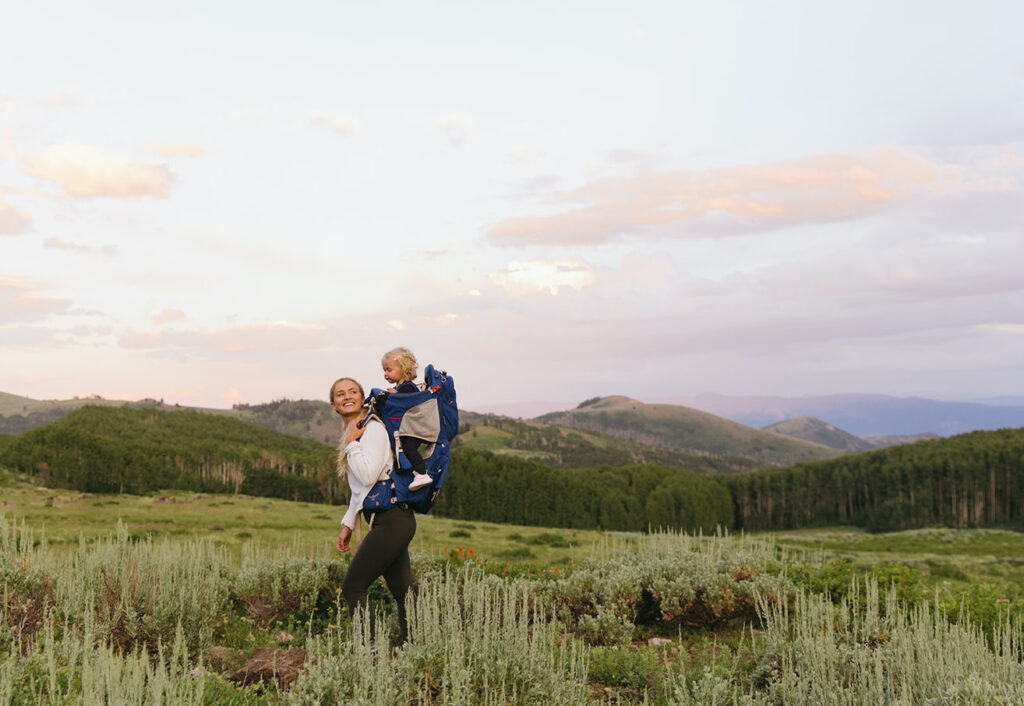
After we get done with a hike, I like to make sure we do a tick check when we get back to our car to make sure we don’t have any ticks tagging along for the ride. This is my last step in preventing tick and bug bites for me and my kids.
What is a Tick Check?
A tick check is a thorough examination of the body to locate and remove ticks, focusing on common areas where ticks attach, such as behind the ears, along the hairline, under the arms, behind the knees, and around the waist.
Tick checks are crucial for preventing tick-borne diseases such as Lyme disease, which can have serious health implications. Ticks are small and can easily attach to the skin without being noticed, making regular checks essential, especially after spending time in grassy or wooded areas. Early detection and removal of ticks can significantly reduce the risk of disease transmission, as most pathogens are not transmitted immediately after a tick bite.
How Often Should You Be Performing a Tick Check?
Your should be doing tick checks regularly, especially after outdoor activities like hiking, camping, gardening, or spending time in grassy, brushy, or wooded areas. It’s essential to check yourself and your children before bedtime, after returning indoors, and after handling pets that may carry ticks.
How To Perform Tick Checks
To perform a tick check, start by examining your entire body, paying close attention to areas where ticks are commonly found, such as behind the ears, along the hairline, under the arms, behind the knees, and around the waist. Use a mirror or ask for help to check hard-to-see areas.
For children, thoroughly inspect their scalp, neck, and behind the ears.
Make sure to check your pets too! Give them a good rub down and make sure to check particularly around their neck, under their legs, and in their ears.
What to Do if You Find a Tick
If a tick is found, use fine-tipped tweezers to grasp it as close to the skin’s surface as possible, pulling it out with steady, even pressure to avoid leaving parts of the tick embedded. Clean the bite area and your hands with rubbing alcohol or soap and water.
If you live in an area where you come across a lot of ticks, it might be nice to carry one of these tick remover options with you. Most first aid kits come with a pair of tweezers which work as great tick removers as well.
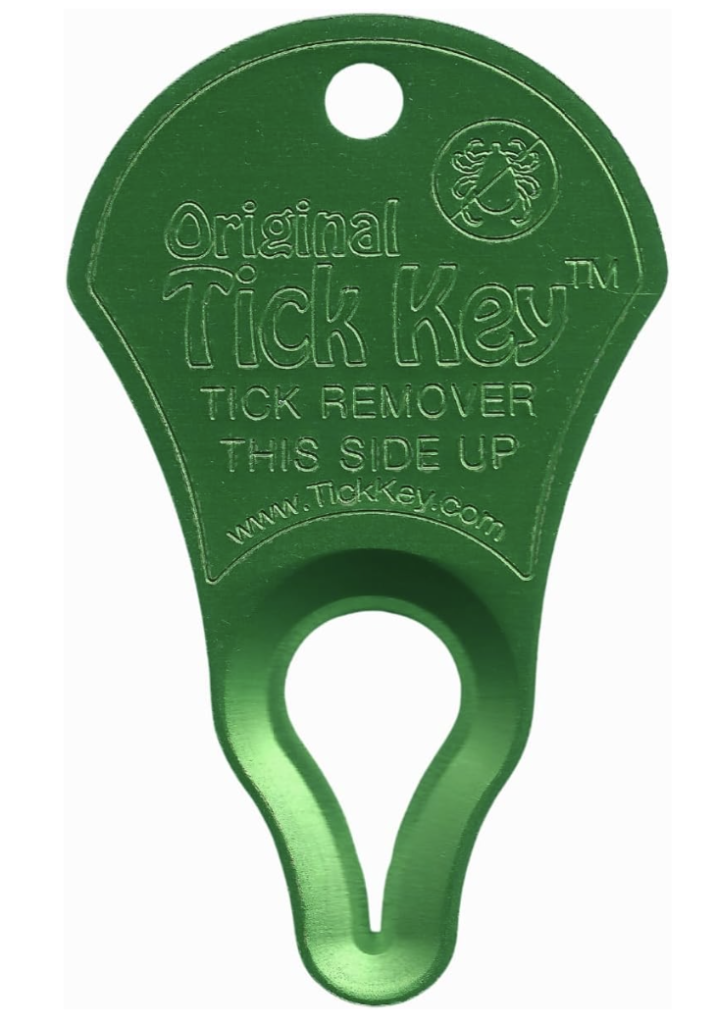
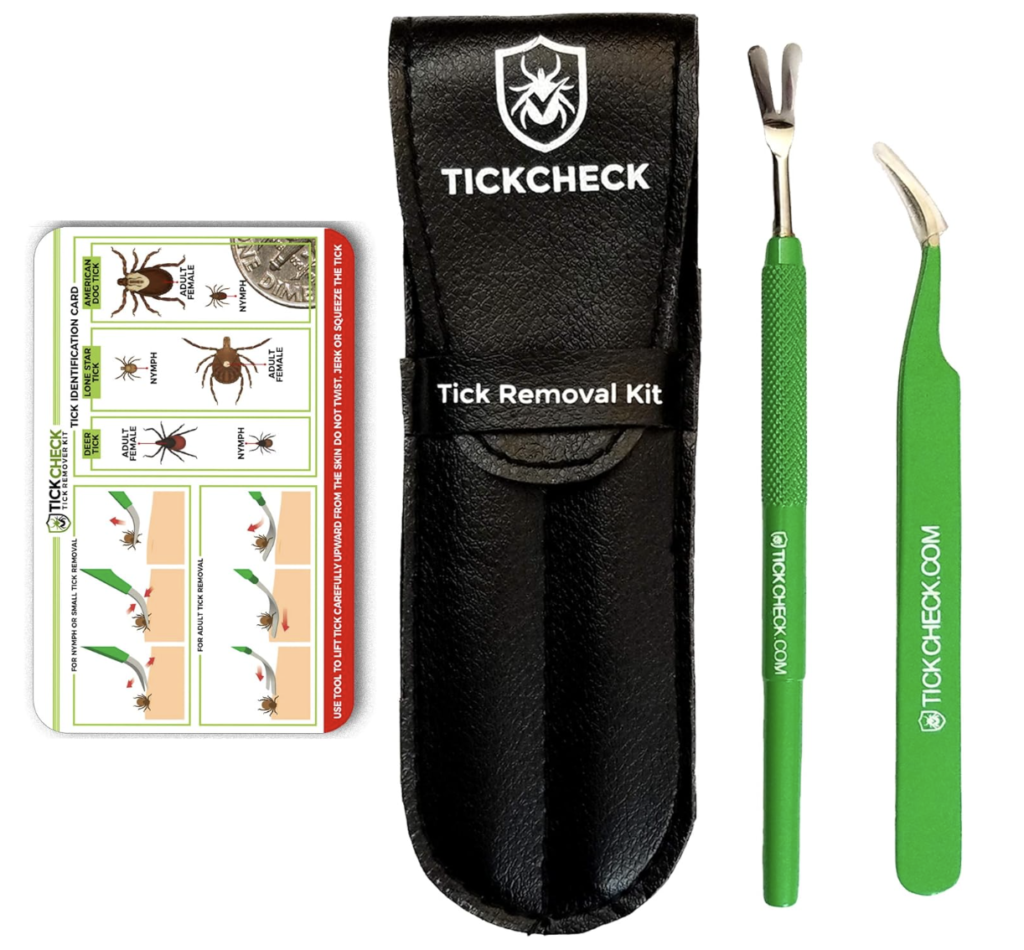
Bug Sprays I Use and Recommend
OFF! Clean Feel Insect Repellent

I use OFF! Clean Feel Insect Repellent Spritz with 20% Picaridin for myself and my kids because it offers long-lasting protection against mosquitoes, ticks, and other biting insects for up to 12 hours. The non-greasy, odorless formula feels comfortable on the skin, making it easy to wear all day.
It’s also safe for my kids, including those over 2 months old, and is a great alternative to DEET-based repellents, which can sometimes irritate sensitive skin. This higher concentration is great when I know we are going to be outside for most of the day and I don’t want to worry about the bugs and ticks.
Ideal for: Long days outside for people who want an effective DEET alternative.
OFF! FamilyCare Insect & Mosquito Repellent

I use OFF! FamilyCare Insect & Mosquito Repellent Spritz most often because in only has 5% Picaridin which is great for most of our outdoor activities. It lasts 3-4 hours which often times is all we are out for. The non-greasy and virtually odorless formula is gentle on the skin, making it suitable for my kids, especially those with sensitive skin. I also like the non aerosol spray because it’s convenient to carry, and I’m less worried about me or my kids inhaling it.
Ideal for: Shorter outings and lower concentration of picaridin and less risk of inhalation.
Sawyer Premium Family Insect Repellent
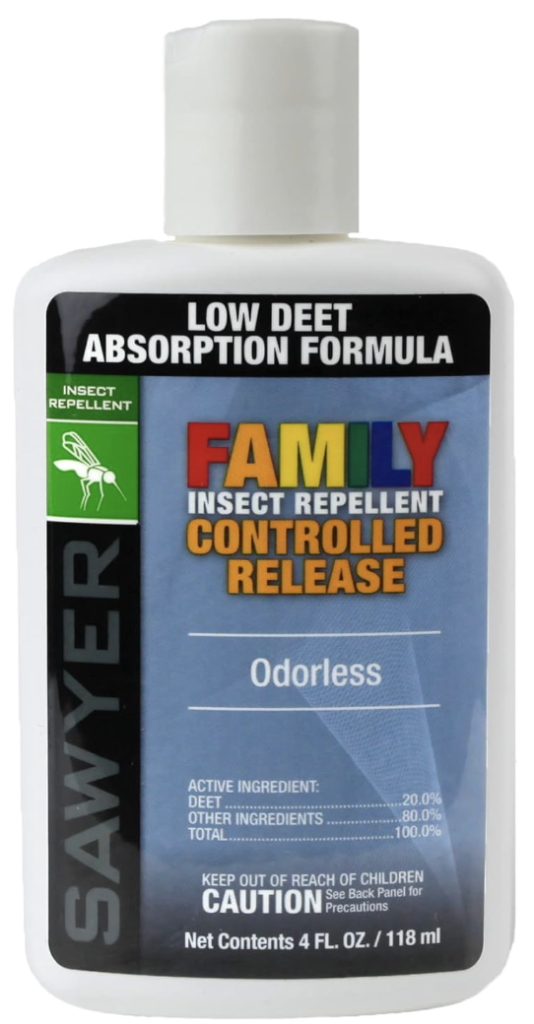
This Sawyer lotion insect repellent is a controlled-release formula ensures that DEET is released slowly over time, providing up to 11 hours of protection without the need for frequent reapplication. This makes it especially convenient for extended outdoor activities. The 20% DEET concentration strikes a good balance between effectiveness and safety, making it suitable for both adults and children. The lotion formula is non-greasy and easy to apply, and ensures you or your kids won’t inhale any bug spray.
Ideal for: Long outings with safe concentration of DEET and no risk of inhalation.
Kinfield Mosquito Repellent: Golden Hour
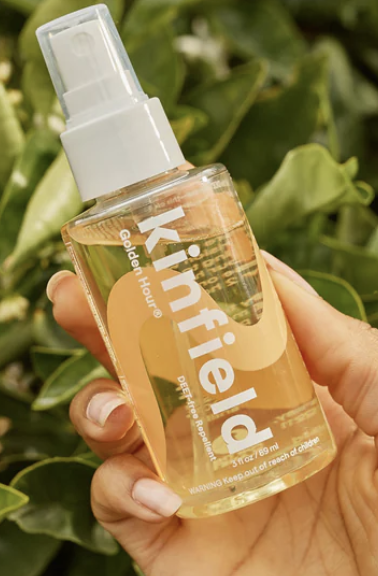
I typically don’t use a natural mosquito repellent when I am out hiking because I don’t find most of them to work effectively. But this bug spray was highly recommended to me by good friends so I am giving it a try this summer!
The Kinfield mosquito repellent uses natural ingredients like citronella, lemongrass, and clove oils to provide effective mosquito protection without DEET or Picaridin. The formula is DEET-free, non-greasy, and has a pleasant, herbal scent, making it comfortable to use regularly. It’s also eco-friendly and cruelty-free. And as I said before, I like the non-aerosol spray because I’m less worried about me or my kids inhaling it.
Ideal for: A natural alternative to DEET or Picaridin.
If you enjoyed this Ultimate Guide to Preventing Tick and Bug Bites for the Whole Family, make sure to check out these posts!

